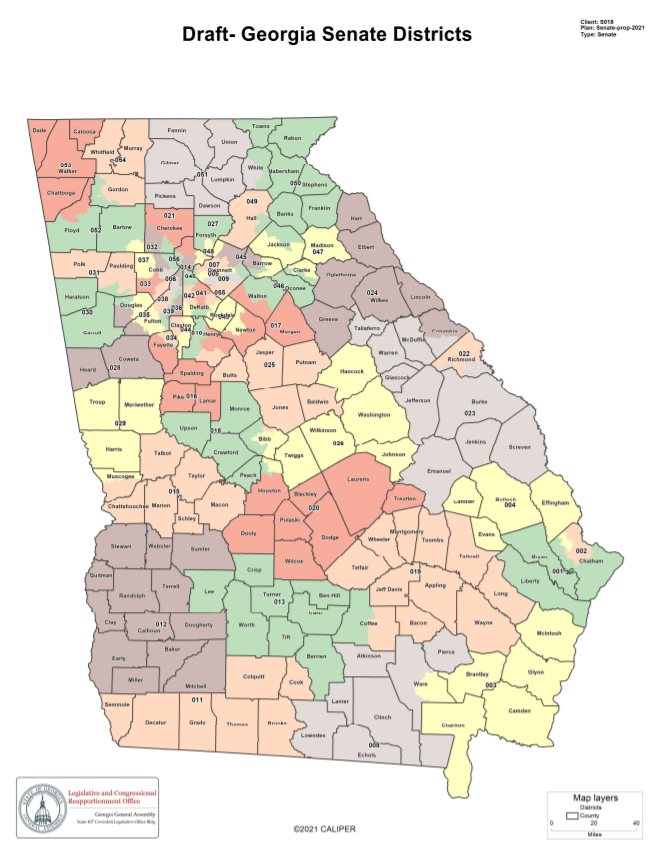
ATLANTA – The new legislative maps Georgia Republicans proposed this week are fair and provide multiple opportunities for minority representation, the chairman of the state Senate’s Reapportionment and Redistricting Committee said Thursday.
But advocates for voting rights and minority groups attacked both the content and timing of the maps during the their first public airing since Republican leaders released them on Tuesday.
State Sen. John Kennedy, R-Macon, the committee’s chairman, painstakingly outlined each of the 56 proposed Senate districts during the first portion of Thursday’s hearing.
He acknowledged the process of creating the new maps has been compressed because U.S. Census data wasn’t released until August.
Under the proposed map, Democrats could gain up to three seats, reflecting the growth of Georgia’s minority populations, voters who historically have supported Democratic candidates. The GOP currently holds the majority in the chamber with 34 seats, to 22 for the Democrats.
During a series of public hearings held across the state during the summer, members of civil rights and voting rights groups urged Republicans to take minority population growth into account when drawing new legislative and congressional district maps.
Kennedy and other Republicans on the committee stressed the new map is less politically divisive than others drawn back when Democrats controlled the General Assembly.
“In 2001, Democrats paired 12 of 56 incumbents, including 10 of 24 Republicans, but only two of 32 Democrats were paired,” Kennedy said. “These new maps are respectful of incumbents returning but also include 14 majority-Black districts and 20 non-white majority districts.”
Sen. Bill Cowsert, R-Athens, who is vice chair of the committee, said the proposed maps comply with state and federal voting laws. He said the maps were created after 11 hearings held around the state, including several online public hearings.
Other Republicans said the Senate map includes requests from the Democratic Party, recognizes state and federal constitutional requirements, and acknowledges past instances of racially polarized voting.
But Janet Grant, vice chair of the nonprofit Fair Districts Georgia, said the GOP map is too partisan.
Grant said the Princeton Gerrymandering Project gave the Democratic Caucus an “A” for an alternative Senate map Democrats released last week in terms of fairness and overall representation and handed the Republican map an “F.”
“There’s an opportunity to improve these maps from both a partisanship perspective and a competitive perspective,” Grant said.
Cowsert questioned Princeton’s methodology in developing its grade.
Salik Sohani, a volunteer for the Georgia Muslim Voter Project, complained that the release of both the GOP House and Senate maps came on a municipal election day throughout the state.
“The only way I found out about the maps was to follow the General Assembly’s Twitter feed,” Sohani said. He urged the committee to reconsider the maps and provide more transparency and translations for non-English-speaking and hearing-impaired residents.
Stephanie Ali, policy director of the New Georgia Project, complained that the committee has scheduled a meeting on Friday to possibly vote on the Senate map during a parade to celebrate the Atlanta Braves World Series championship.
Also on Friday, the House Legislative & Congressional Reapportionment Committee will hold its first meeting on the proposed House map.
The General Assembly redraws Georgia’s congressional and legislative district maps every 10 years to account for population shifts reflected in the U.S. Census.
This story is available through a news partnership with Capitol Beat News Service, a project of the Georgia Press Educational Foundation.